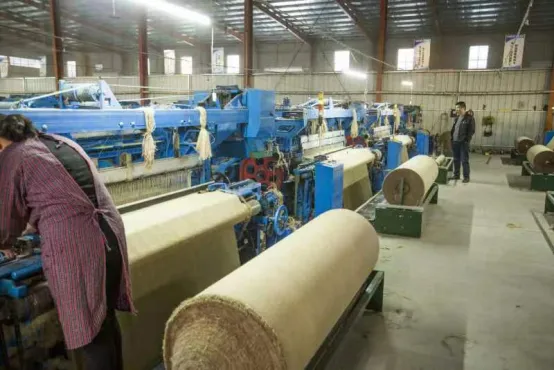The Rise of Jute Fabrics: Eco-Friendly Options Leading the Textile Revolution
The textile industry is undergoing a transformative shift, with a growing emphasis on sustainable materials becoming increasingly prominent. Among these eco-friendly options, jute fabric is emerging as a key player. Known for its remarkable versatility, biodegradability, and affordability, jute is capturing the attention of both manufacturers and consumers who are eager to make environmentally-conscious choices. This transition towards jute signifies not only a change in material preference but also suggests a broader commitment to ethical and sustainable practices within the industry. Derived from the Tossa jute plant, jute is often referred to as the 'golden fiber,' a testament to its legendary value and multifaceted utility. Historically, jute has been utilized in various forms such as ropes, bags, and carpets. However, innovations in textile production are allowing this robust material to venture into new realms, including high-end fashion and diverse everyday products. The natural sheen of jute, coupled with its strength, renders it an attractive option for a wide array of applications, positioning it as both a practical and fashionable choice for contemporary needs.
One of the driving forces behind the surge in jute fabric’s popularity is its minimal environmental impact. Compared to cotton, which requires considerable water and pesticide inputs, jute is far more sustainable. It thrives in diverse growing conditions with significantly less need for irrigation and chemical interventions. Moreover, jute plants possess an impressive capacity to absorb CO2, thereby contributing positively to climate change mitigation. The environmental advantages of jute extend beyond the cultivation phase; the material is biodegradable, which means it does not accumulate in landfills as many synthetic fabrics do. Consequently, jute offers a compelling ecological profile that aligns well with the principles of a circular economy. The shift towards jute is thus a reflection of a broader environmental ethos taking hold within the textile sector, driven by both consumer demand for greener products and a proactive stance from manufacturers seeking to reduce their ecological footprint.
Economically, the rise of jute is also making a significant impact, particularly in regions where its cultivation is a primary agricultural activity. Countries like India and Bangladesh are leading the way, with jute farming providing livelihoods to millions of farmers and their families. The increasing demand for jute has invigorated these local economies, fostering sustainable agricultural practices and generating much-needed income. However, while the economic and environmental benefits are substantial, the jute industry does face certain challenges that must be addressed to ensure its long-term viability. Technological advancements in processing are necessary to enhance efficiency and product quality. Additionally, there are ongoing concerns regarding consistency in quality, which can affect the material's performance and market reputation. Nevertheless, through continuous research and development, supported by governmental policies encouraging sustainable agriculture, these challenges are being met with innovative solutions. As consumers and businesses persist in their quest for sustainability, jute fabric is poised to become a cornerstone of eco-friendly textile production. Its versatility, coupled with its environmental and economic benefits, underscores its potential to spearhead a more sustainable future in the global textile industry.
Share
-
Lithium Battery Welding Machine | High-Precision, Fast, SafeNewsNov.17,2025
-
Aluminium Guide Roller | Anodized, Lightweight, Low-NoiseNewsNov.17,2025
-
Tofu Cat Litter Bulk – Eco, Low-Dust, Fast Clumping SupplyNewsNov.17,2025
-
Equipment for Lithium Cell Assembly | Automated & PreciseNewsNov.10,2025
-
Square File Tool – Precision Cut, Hardened Steel, VersatileNewsNov.10,2025
-
Lithium Ion Battery Assembly Machine | Automated, High-SpeedNewsNov.10,2025








